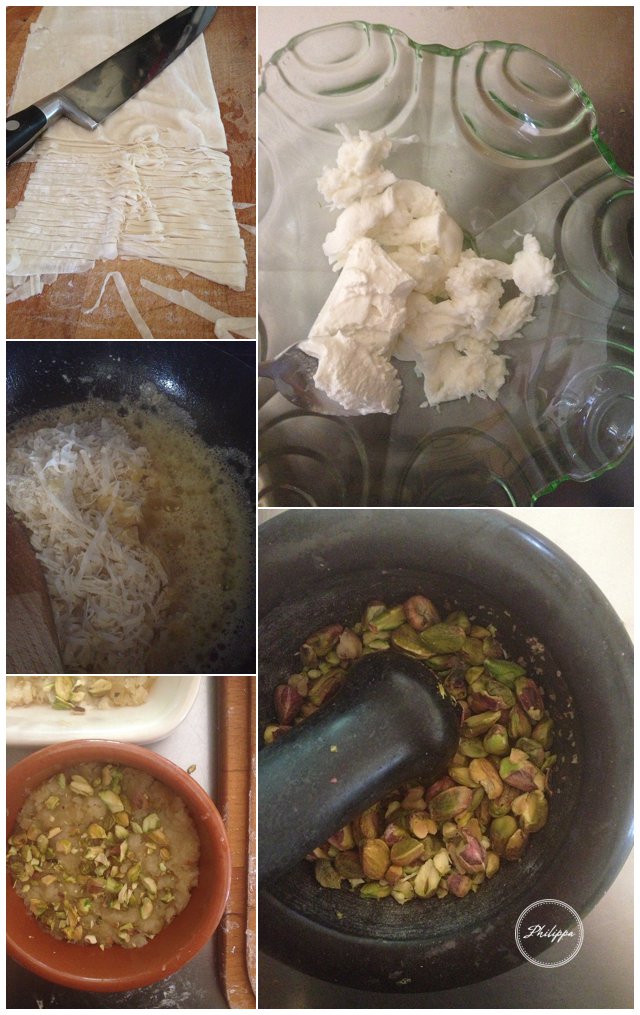Recipe | Künefe – Honey, pistachio, walnut and orange blossom Turkish pastry
I have just spent a delightful week in Dorset embracing country pursuits. Mucking around with horses, walking the dogs, picking plums and best of all, harvesting honey.

At the bottom of the garden, amongst the apple and medlar trees there stands a beehive with the colony preparing for the cooler winter months ahead. Harvesting is usually done in the late summer, but with a few ultra warm days we got busy and collected the sticky delicious perfumed liquid.

First you have to get dressed up, the jumper part looks like a collaboration between a NASA and Lady Ga Ga design, and then there is the necessary clumpy boots, thick trousers and protective gloves — sexy and chic this activity is not. We drew lots to see who would get the older suit with holes in, my brother in law ( keeper of these bees) lost, but decided it would add a fun element of extra danger to this years harvesting. You can waft smoke into the hive to make them a little more docile but even with this there is a certain adrenaline rush as the top chamber is opened and they come flying out. The intensity of the buzzing around my head, seeing them whizz past the thin netting covering my face certainly got my heart pumping.

Obtaining the honey involves cracking off the wooden frames from the super ( the compartment where the honey is stored) then slicing off the capped waxed ends of the comb and spinning it. The honey is left overnight to settle then can be drained out and jarred. This was all great fun but what really sparked my interest was life in the colony itself.


In the hight of the summer this healthy bee colony contained around 40,000 lady worker bees, a few thousand drones ( personal male gigolos to the queen) and of course only one Queen Bee.

The bees would naturally swarm each year to build a new hive, so its the beekeepers job to prevent this or there will be no honey for them to collect. Incidentally the cartoons had it wrong, a swarm of bees are relatively harmless. They are so full of food ready for the delights of the house hunting journey they would rarely sting, something I never wish to test.

In natural conditions a typical cycle would go like this. When the hive is ready to swarm the queen bee would lay lots of eggs that are then fed royal jelly by the worker bees. Having done that most of the hive ups and leaves with the old queen. The new potential queens begin to emerge from their cells and in Highlander fashion one queen bee will kill off the rest of the rival heirs. After a few days she mates with a good few of the drones, the male bees whose only purpose is to fertilize her. Sadly this act kills the drone but I guess there are worse ways to go. Only needing to do this once for her whole life ( she can live up to 7 years) any other drones are often killed and swept out of the hive before the leaner winter months come.


As the queen can dictate the sex of the eggs she lays, more drones are created when required. The hive spends the summer collecting pollen and nectar to make the honey. Usually they produce more than they need to feed themselves over the cold months so we get to eat the extra.

Having potted 10 lbs of honey I came up with a giant list of what I would like to use it for. Drizzling it on crumpets, white bread, pancakes, porridge or using it in parsnip, date and mint salad, slow roast spiced honey lamb – of course all delightful but so is the chance to make künefe, a turkish sweet pastry swamped in honey, nuts, cheese and orange blossom, the recipe I shall give you now.
Honey, pistachio, walnut and orange blossom künefe
serves 10
This is suitable with the mid morning coffee or as an after dinner decadence. It is sweet so only a little each is needed. Serving it with clotted cream ( Kaymak is the Turkish equivalent) is essential and finishes the treat.
Pre heat the oven to 170 ° c
Ingredients
270 g filo pastry
125 g butter
100ml milk
75 g of pistachios 75 g walnuts – chopped or pounded up with a pestle and mortar
125 g ricotta and 125 shredded mozzarella mixed together
8 dessert spoons of runny honey
2 teaspoon of orange blossom
- Cut the filo into thin strips ( roughly a few millimeters wide)
- Melt the butter in a saucepan and add the shredded filo then milk stir until combined.
- Press half this mix into a round oven proof dish – roughly 22cm in diameter.
- scatter with a 1/3 of the broken up nuts then spread on the ricotta/mozzarella mix
- scatter on another 1/3 of the nuts then top with the rest of the pastry
- bake for 45 mins
- once out drizzle with the honey and orange blossom and top with the rest of the nuts
- serve warm with clotted cream


Interested in learning more about bees? Visit http://www.bbka.org.uk or find your local bee keepers association.





